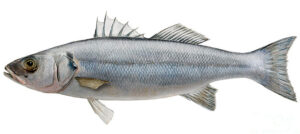LAVRAKI
Title: Environmental and pharmacological manipulations for the improvement of methods for the control of early reproductive maturation, ovulation and sperm production in the European sea bass (Dicentrarchus labrax)
Funding Source: IPE Cyprus National
Budget IMBBC: 17,000€
Start / End Date: 2000 - 2003
Project Progress: 100%
Research Directions:
Reproduction and physiology
Description:
 One of the most important species of marine fish farming in Europe is the European sea bass (Dicentrarchus labrax). Annual production accounts for 42% of marine fish farming in Europe, no including Atlantic salmon. It is a very popular species and in the future its production in Europe is expected to increase further. Cyprus is one of the first Mediterranean countries to develop marine fish farming, but focusing mainly on gilthead sea bream (Sparus aurata). This is due in part to the malfunctions of seabass reproduction and the susceptibility of the offspring to disease due to the high temperatures of the Cyprus Sea. Some of the problems are that the start of the breeding season varies considerably from year to year, as does the percentage of females giving birth and their annual fertility. Also, because the production of brood is limited to the spring months, the brood is placed in the open sea during the spring and summer months when the water temperature is high.
One of the most important species of marine fish farming in Europe is the European sea bass (Dicentrarchus labrax). Annual production accounts for 42% of marine fish farming in Europe, no including Atlantic salmon. It is a very popular species and in the future its production in Europe is expected to increase further. Cyprus is one of the first Mediterranean countries to develop marine fish farming, but focusing mainly on gilthead sea bream (Sparus aurata). This is due in part to the malfunctions of seabass reproduction and the susceptibility of the offspring to disease due to the high temperatures of the Cyprus Sea. Some of the problems are that the start of the breeding season varies considerably from year to year, as does the percentage of females giving birth and their annual fertility. Also, because the production of brood is limited to the spring months, the brood is placed in the open sea during the spring and summer months when the water temperature is high.
The object of the research proposal was to develop (a) photothermal methods for accelerating reproductive maturation and off-season reproduction and distribution of offspring, and (b) hormonal methods for the control and optimization of spawning and sperm production. Two chambers of environmental management were constructed with recycled water and photoperiod and temperature control, and will be used to accelerate reproductive maturation by 3-6 months. Gonadotropin-releasing hormone (GnRHa) analog controlled secretion implants were prepared and characterized. Their effectiveness in causing the final ripening and increasing sperm production in European sea bass was examined and compared with existing breeding control methods.
The LABVAKI program has effectively contributed to both the amount of European sea bass and the period of its availability in the domestic and foreign markets, including the winter months. It has also optimized the effectiveness of European sea bass reproduction, thus reducing the cost of egg production and increasing the competitiveness of Cypriot fish farms in the Greek brood market, which absorbs more than 30% of the Mediterranean and 70% of the Cypriot production.


